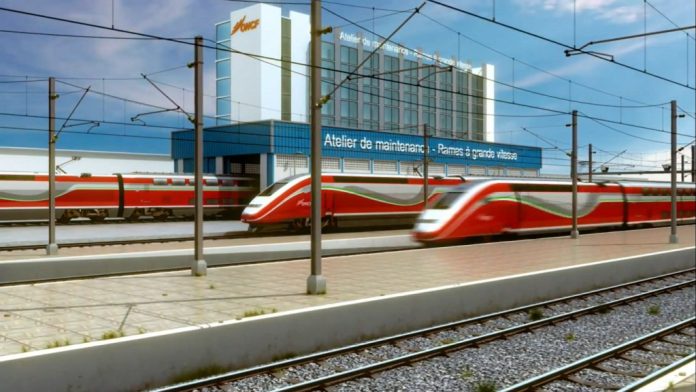The consortium led by French company Egis Rail has been selected to oversee the high-speed rail (LGV) project connecting Kenitra to Marrakech. Despite a higher financial offer (1.385 billion dirhams) compared to its Spanish competitor Ineco (1.309 billion dirhams), Egis Rail’s proposal, which also includes Systra and Moroccan firm Novec, was deemed the “most advantageous” after a thorough review.
A four-phase contract
The contract is divided into four phases:
- Firm phase: Project management and integration assistance (686.5 million dirhams and 5.1 million euros).
- First conditional phase: Additional project management and integration assistance (373.96 million dirhams and 3.2 million euros).
- Second conditional phase: Assistance with testing and certification (98.93 million dirhams).
- Third conditional phase: Approval of civil engineering infrastructure studies (116.99 million dirhams and 110,880 euros).
Scheduled for 2030
This major project aims to commence commercial operations of the Kenitra-Marrakech high-speed rail line before 2030, marking a significant milestone in the development of Morocco’s railway infrastructure.
The extension of the high-speed line will stretch from the current endpoint in Kenitra to Marrakech. The line will extend from Kenitra to Marrakech Guéliz, including all intermediate stations except for the section with ERTMS level 1 at Rabat-Agdal station.
Key features of the new line
The new line will also integrate connections with the conventional rail line, new terminal facilities in Marrakech, and new stations, including Marrakech-Palmeraie, Marrakech-Guéliz, Stade de Marrakech, the new terminal at Mohammed V Airport in Nouaceur, the Grand Stade de Benslimane, and new rolling stock maintenance workshops. Additional adjustments will be made to support service improvements on the conventional network, including connections and enhancements to existing terminals and stations.
Moreover, the metropolitan service lines between Mohammédia-Facultés, Casa-Port, and Nouaceur (new city), as well as the service line between Skhirat and Kenitra, will be developed. The conventional line from Nouaceur to Settat will also undergo modifications, including track plan revisions. The high-speed line’s design speed is set at 350 km/h, with an operational speed of 320 km/h.





